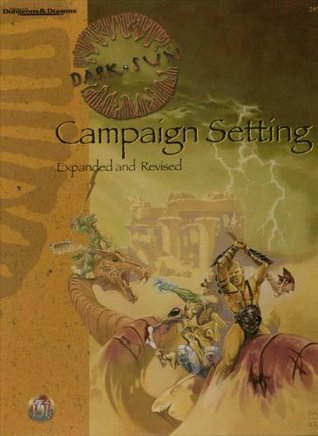What do you think?
Rate this book


332 pages, Hardcover
First published October 1, 1995
 . Suddenly, there's no moral quandry about how to improve Athas because there's a template set and the answer is obvious. Just be Lawful Good and throw a bunch of magic at it and your problems are solved. What an incredible letdown.
. Suddenly, there's no moral quandry about how to improve Athas because there's a template set and the answer is obvious. Just be Lawful Good and throw a bunch of magic at it and your problems are solved. What an incredible letdown.But heroes are desperately needed in this harsh, savage world. . . . Heroes like the ones who stepped forward to destroy the sorcerer-king Kalak and set Tyr free. Heroes like those who risked everything to kill the Dragon and keep Rajaat the Warbringer from devastating the land."Heroes." Most of the adventures were about heroes solving problems, but I've always thought of Dark Sun as much more traditional sword and sorcery, like the Fafhrd and the Grey Mouser stories, where the protagonists are motivated by survival and wealth and living another day, not saving the world. Second Edition's obsession with the PCs being heroic do-gooders was often an odd fit, and rarely did this stand out more than under the crimson sun.